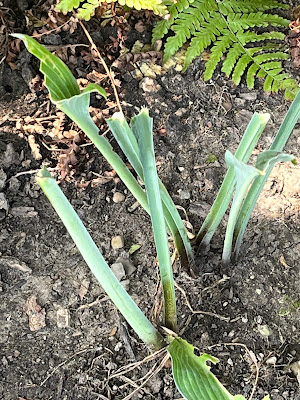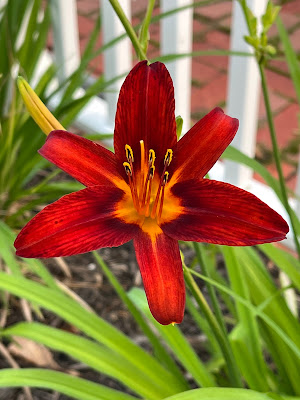When I have dyed wool, I have used the instructions from the Barbara Carroll/Emma Lou Lais dye book. They have worked well for me, though I often did not get the colors I expected because I am not that exact in my measuring. The process they use takes a couple hours. Per instruction in the book, I soak my wool overnight or for at least several hours. Dave, our teacher, just takes the wool to the sink and wets it being sure it is totally wet. The dye methods we learned yesterday took minutes. Dave doesn't use any dye recipes . . . just wings it . . . and he believes in doing things the easiest way possible.
First of all we learned to Kool Aid dye. (Note ~ other brands of powdered drink mix were also used.)

Mason quart jars were used. We used near boiling water and added the powdered mix. Some were the little single bottle packets and 2-3 were put in, depending on how much color was desired. Dyeing in jars, the pieces of wool were rather small unlike when you dye in a big pot. The pieces were maybe 4" x 18". Nothing was measured exactly. Add your wool and after you think you have your desired color, add a little vinegar, stir it around, and voila . . . you are done. Take to the sink and rinse well. I found it amazing how much color rinsed out and the wool ended up being much lighter than anticipated. I wonder if you let it sit in with the vinegar longer more color would be absorbed. When I use the Barbara/Emma method, I still simmer the pot for 20-30 minutes after the vinegar is added and most if not all the color is absorbed in to the wool. The Kool Aid results tended to be brighter/more jewel toned colors than I hook with. I have also heard that the colors tend to fade but that was not discussed and can't say whether that is true or not. I used the same mason jar method but added some powdered acid dye and followed the same instruction.
One thing Dave does that I do not is he always uses distilled water and not tap water. From day to day what chemicals are in your water can change. Well water can make a big difference, too.
I gave all my dyed pieces to Sue so hopefully she will share them over at Vernon Junction.
Sue sent me pictures of the wool. In this picture, Sue dyed the second wool from the top. The others I dyed in the mason jar with a teal blue acid dye. I dyed the wool one piece at a time, but used the same dye bath several times even though vinegar had been added.
This was overdyed with a chocolate acid dye. It had a lot of red in it.
These pieces were Kool Aid dyed with black raspberry lemonade.
All the wool drying.Dave also touched on crockpot dyeing. We did not try it but he said to fill the crockpot about 2/3 full and pretty much use the same method as with the mason jar dyeing. He said that crockpot dyeing tends to produce evenly dyed pieces of wool.
Next he showed us electric fry pan dyeing. Add maybe 1/2" of water and heat until water begins to bubble. Add a piece of wool no larger than the size of the pan. He had some dye that he had mixed with water and kind of put "spots" of it on the wool. A great method for spot dyeing. I know I will not use this method. I don't normally use spot dyes and the pieces of wool would tend to be much too small for my liking. I like hooking with longer worms.
I hope what I learned and shared has not been to vague. I guess what I gleaned from the class is to experiment and have fun. I think I will soon try the crockpot method. I purchased a couple crockpots years ago, but have not used them. Dave said to be sure not to use any of your items for cooking after you have used them for dyeing.
Thanks so much for stopping by.
Pug hugs 😊
Lauren









.jpg)









.JPG)
.JPG)





.JPG)
























